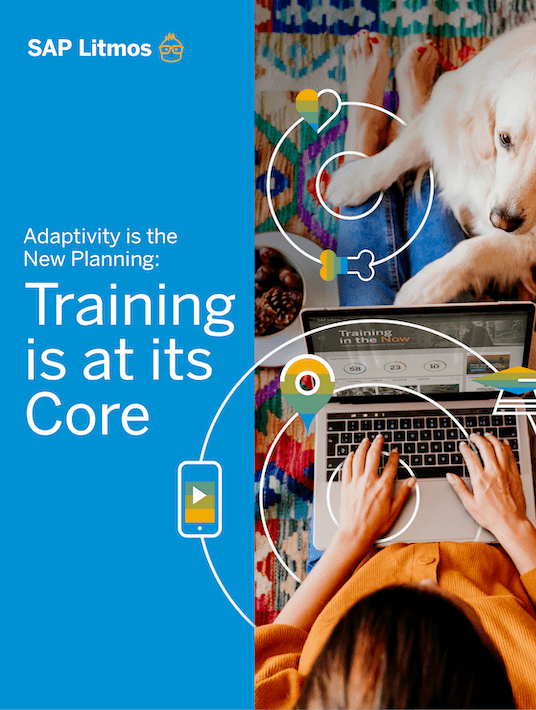The Discipline Of Adaptivity: Why Planning Ahead Isn't Always The Best Approach
The Coronavirus changed everything. More accurately, it changed everything, everyone, everywhere. No one was spared from the strangeness, the unequivocalness, and ultimately, the adaptivity required by a world of lockdowns, social distancing, mask wearing, and nearly all remote interaction. Adjustments had to be made in every aspect of life.
Challenging as this was, there are countless lessons to be learned. Personal lives aside, the pandemic proved that business environments can change unexpectedly and are less in our control than we might like to think. The rules of the game had to be rewritten on-the-fly; countless players rapidly reinvented their processes; and competitive advantage was awarded to those who adapted fastest. Success became less about future predictions and more about in-the-moment action.

Transitioning To Telecommuting
Even at the very beginning of the COVID-19 crisis, companies started scrapping their plans and creating new ones to address the many challenges at hand – transitioning to all-remote workforces, preparing for disrupted supply and demand chains, adjusting to budget constraints, and training for new skillsets and processes, including health and safety protocols. The changes affected most industries – manufacturing, travel and transportation, retail, hospitality, education, healthcare – some far worse than others, but all in ways that were palpable and caused ripple effects for other markets.
Now, the “adaptive advantage” is what most businesses seek – and not just for the next year or two. Sudden, massive change proved its power over planning. The traditional, calendar-driven planning cycle may never be the same as organizations shift to agile models that don’t just consider the possibility of disruption, but overtly expect it. For the foreseeable future, adaptivity is the new planning.
Organizations are only as strong as the adaptivity of their people and technology ecosystems. To stay competitive, organizations need adaptable people engaged with flexible, agile systems in order to maintain business continuity, not to mention to deliver experiences to the market in new or updated ways. Companies that can’t do this quickly now know the hard way that they won’t make it for long.
An L&D Balancing Act
As stated on Chief Executive, “In the coming years, survival and success will rely on people and machines that together achieve excellence in creativity, agility and collaboration. Data will be pervasive, and real-time performance measurement and adjustments will be expected. With this mix of human capacity and advanced technology, organizations should adopt proven approaches to become ‘ambidextrous’ – balancing efficiency with creativity by matching the right approaches to different jobs.”
This idea is particularly valuable to those in Learning and Development (L&D). Now more than ever, L&D functions must pull together the power of technology and the power of people to sustain the organization, especially in times of change or crisis, and to attain new levels of agility. Training connects these two powers.
In the past, disruption scenarios centered around maintaining infrastructure and physical facilities, and focused on handling short-lived events like catastrophic weather, natural disasters, accidents, cyberattacks, or even fraud. That viewpoint must be fully reassessed, as now we know that some disruptions may last for months or even years. To develop the people skills necessary for long-term resilience, L&D will play a critical role in business continuity planning and execution. Learning leaders must be prepared to guide the organization to adapt and persevere by implementing the right technology and fueling it with targeted, strategic training content – ultimately to create an unprecedentedly adaptive workforce.
Continuous Learning Culture's Role In The Discipline Of Adaptivity
Clearly, without intelligent, centralized learning technology, an organization can not continually develop its people to adapt to changing roles. Add to that the challenges of scaling learning to large numbers in very short timeframes. Even before the pandemic, the average half-life of a learned job skill was estimated at just five years. COVID shortened that span significantly.
Changes reach far beyond information workers physically relocated to all-remote offices during the pandemic. People in trades and service roles have always faced ongoing reskilling as products and technologies change. Certified workers like builders, plumbers, and electricians regularly have to obtain safety and other compliance licenses. Doctors and nurses have to train to use new medical equipment. The list goes on. Today’s business environment simply accelerated these existing requirements, as well as added some new standards regarding health and safety protocols that will never return to pre-pandemic levels.
To be an adaptive organization means having a continuous learning culture able to make quick pivots at any time and with minor disruption to the business – both from the customer point of view as well as internally. Training must now be woven into the highest-level strategy with plans to deliver reskilling and upskilling within days, not months. The good news is that investments into learning programs and technology are already delivering ROI.
As stated in Harvard Business Review: “Becoming an adaptive competitor can be difficult, especially for large, established organizations. Typically, these companies are oriented toward managing scale and efficiency, and their hierarchical structures and fixed routines lack the diversity and flexibility needed for rapid learning and change. Such management paradigms die hard, especially when they have historically been the basis for success.”
Conclusion
Those are the organizations that currently want to cut costs and exercise extreme caution in investments not directly related to revenue creation, but this is not the time to disinvest in training due to budget restrictions. Investments into training programs with flexible and ready-to-run technologies are crucial to creating adaptive organizations. And if we’ve learned anything from the dramatic events of the pandemic, it’s that adaptable, well-trained people are a driving force behind the businesses that will win in the long run.
Download the eBook Adaptivity Is The New Planning: Training Is At Its Core to learn how to launch a flexible online training strategy that deals with emerging challenges.

